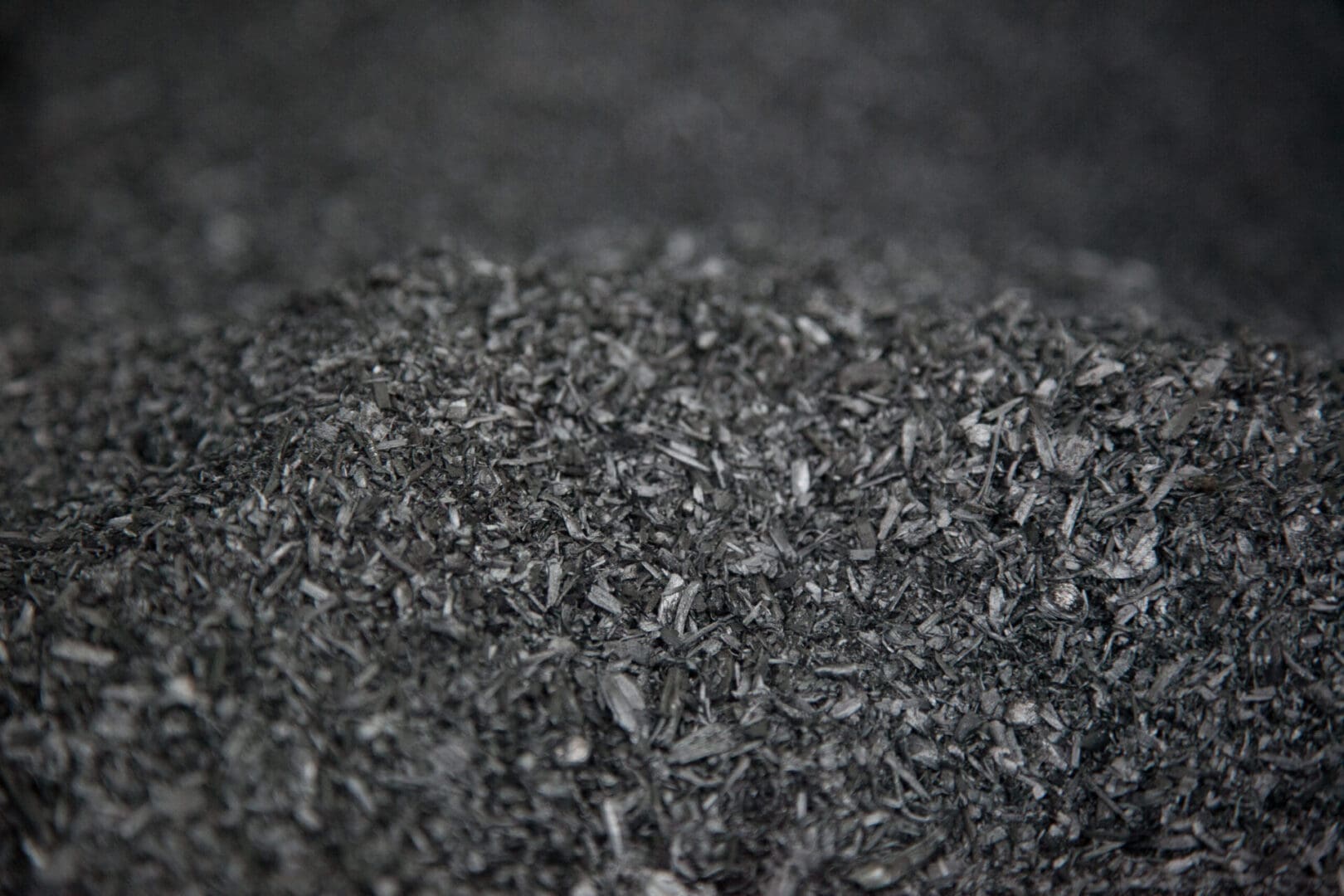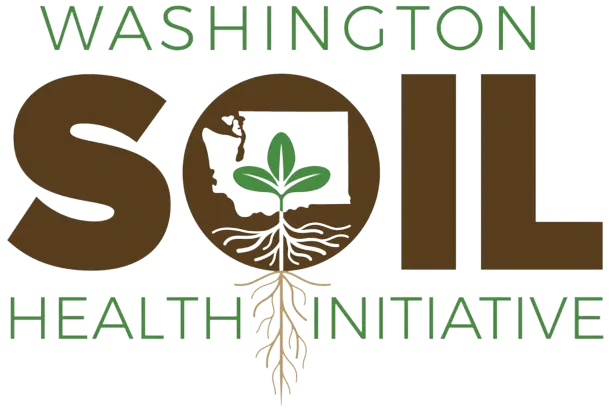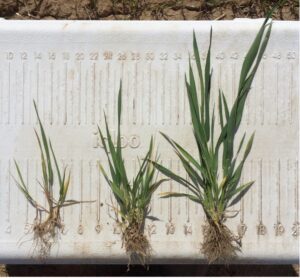
Biochar: In a library of information, how can farmers flip through the index?
If you want to help sequester carbon but are confused about what biochar can do for your soils and your crops: you aren’t alone.
August 1, 2024
Kristin Trippe, USDA-ARS
For thousands of years, indigenous cultures from around the world used charcoal to improve soil fertility. For the last 25 years, scientists have been trying to understand why this works and, more importantly, how we can use this traditional ecological knowledge to improve yields and, maybe, in the meantime make a small dent in carbon dioxide emissions. Since 2008, over 35,000 biochar studies have been published in the scientific literature. And while each of these studies have come to various conclusions about how soils and crops respond to biochar, nearly all of them agree on one thing: it depends.
The way a soil or a crop will respond to biochar application depends on what the biochar was made from (feedstock) and how the biochar was made (production conditions). This is an important conclusion, because it implies that biochar producers can create biochars for specific applications. Do you need a biochar that can raise the pH of a soil? How about one that can bind metals or toxic substances from soil? Do you need one that can increase soil carbon? One that can increase water holding capacity? While biochar producers have the technology to produce various biochars for various end uses, asking farmers to figure out which biochar, in which place, at what rate, is asking too much.

VARIETY | Biochar can be made from a variety of feedstocks or sources, and the final biochar product can be vastly different.
© Kristin Trippe
Which brings us to the biochar dilemma: the very thing that makes biochar so usable (versatility and tunability), also makes it impossible to use. Or, as the ecologist E.O. Wilson famously quipped, “We are drowning in information, while starving for wisdom”.
That paradigm is changing. Recent decision support tools, fact sheets, and financial incentives help farmers navigate the complexity of choices around biochar to make decisions that help them apply biochar in the right place, at the right rate, using the right source. These include:
- The Pacific Northwest Biochar Atlas
- The Soil Carbon Amendment Calculator
- Factsheets developed by the US Biochar Initiative
Pacific Northwest Biochar Atlas
The Pacific Northwest Biochar Atlas was developed in 2017 to help bridge the gap between discovery and deployment of biochar knowledge. The site contains basic biochar information, case studies, and a directory of local biochar producers. It also has a tool that compares the properties of different biochars. But the main intent of the site is to provide decision support to farmers in Washington, Idaho, and Oregon to find a biochar that meets the needs of their soil and their crop. This involves four steps.

A NEW TOOL | The PNW Biochar Atlas helps users decide what biochar fits best with their cropping goals and needs within their economic bounds.
© Kristin Trippe
Step 1. Gather information about your soils. First, the tool needs to know something about your soils and your crop. To gather this information, click on a soil series using our map-based Soil Data Explorer, or even better, enter information from a soil test.
Step 2. Identify Cropping Goals. Using information about the soil, select a common crop grown in the Pacific Northwest. The tool will evaluate the information entered in Step 1 and determine if the soil can provide adequate crop nutrients or if it needs adjustments to soil pH. The tool will also provide some information about soil water and organic carbon. Using this information, the tool asks users to select three goals, ranging from adding soil carbon, to increasing specific nutrients, to increasing pH.
Step 3. Selecting a biochar that meets your needs. Based on the ranking of the three goals, the tool recommends a biochar that meets the needs of the soil, crop, or the farm. It will also compare how different amendment rates can meet these needs.
Step 4. Estimating economic benefits (or deficits!) from biochar application. Using biochar to address soil resource concerns like nutrients, soil carbon, or pH can result in increased yields, but will this increase offset the cost of the biochar? The Cost-Benefit Analysis tool evaluates the cost of the biochar versus the increase in crop value (if any!) and by estimating savings or cost increases from other crop inputs.
If you are familiar with the four Rs of nutrient management (the right time, the right rate, the right source, and the right place), the framework that the Biochar Atlas is built on might sound familiar. But, regardless if it is nutrients or biochar, this framework can help users pick a biochar and a rate that makes sense for the soil, the crop, and the pocketbook!
Additional tools
But…what if crop yield doesn’t increase? What if the intent is simply to improve sustainability? In 2023, the USDA NRCS began offering financial incentives to increase soil carbon. The Conservation Practice Standard (CPS) 336 Soil Carbon Amendment offsets the cost to apply compost, biochar, and other carbon-based amendments to soils. Because the practice will pay for the cost of application and the cost of the material, working with a local planner could potentially lower or completely cover the cost of biochar application, which obviously changes the outcomes predicted in Step 4! To learn more about CPS 336, contact your local NRCS office.
The NRCS is using the Biochar Atlas to help planners make decisions about biochar. But the Atlas only covers the Pacific Northwest. While the Atlas starts to add more states and more biochars to its databases, the USDA has created a tool to help implement the Soil Carbon Amendment. The Soil Carbon Amendment Calculator is a spreadsheet-based decision support tool that can estimate increases in soil carbon and fertility by entering information about soil, biochar, or other carbon amendments.
The online tools and the financial incentives can help make decisions about which and how much biochar to apply, but what is the best way to apply biochar to soil? The answer to this question obviously depends on the practices that are used on an individual farm. For example, if a farmer practices no-till farming, incorporation of biochar into soil using a drill or a manure spreader might be the best application method, while a farmer that practices tillage might apply biochar using light tillage.

FACTSHEET | One of many factsheets created by the US Biochar Initiative that support the production and development of biochar.
© US Biochar Initiative
While best practices for applying biochar vary farm-to-farm, guidelines for the application of biochar are detailed in factsheets that have recently been published by the US Biochar Initiative (USBI), a non-profit organization that supports the production and application of biochar.
The Biochar Guidelines for Agricultural Application factsheet covers a range of topics, including different application methods in both perennial and annual cropping systems. USBI has been prioritizing the development of factsheets, so be sure to explore others on topics that go beyond application, that provide information on composting with biochar, and others!
If you are still confused about how biochar can help improve your soils to reach your goals, check out these tools, but also reach out to your local county NRCS office or university Extension! Scientists know that biochar is complex, but together- we can help make decisions that make sense!
Find more Washington Soil Health Initiative articles about biochar.
David Gady, a 4th generation Washington farmer, grows bluegrass (lawn seed) in Rockford with his brother and father. In the early 2010s, David became a biochar innovator in the region when he built a gasifier to convert bluegrass straw and seed screenings into biochar and energy.

Kristin Trippe
Kristin is a Research Microbiologist with the Forage Seed and Cereal Research Unit in Corvallis, Oregon.
This article was published by the Washington Soil Health Initiative. For more information, visit wasoilhealth.org. To have these posts delivered straight to your inbox, subscribe to the WaSHI newsletter. To find a soil science technical service provider, visit the Washington State University Extension website or the Washington State Conservation District website.


